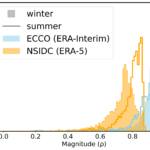
Wind-ice coupling in MITgcm reanalysis
Ashfaq Ahmed, Daniel Watkins, Baylor Fox-Kemper, Monica M. Wilhelmus
Rapid thinning and retreat of Arctic sea ice are amplifying wind–ice–ocean momentum exchange [1]. This increased energy input is fundamentally changing the turbulent regimes and remodulating the pathways of mass, heat and momentum transfer [2]. Yet, the Arctic Ocean’s near-surface kinematic response to these changes remains poorly quantified. Here, we use version 4, release 4 of the Estimating the Circulation and Climate of the Ocean (ECCO) to present a long-term, seasonally and regionally resolved analysis of near-surface kinematics in the Arctic. We analyze three decades of wind-driven near-surface (0-50 m) sea ice kinematics and ocean energetics across regional, seasonal, and decadal scales. ECCO successfully captures observed large-scale circulation patterns, though it tends to slightly overestimate sea ice drift speeds—a known bias shared by many reanalysis products. Arctic-wide, mean EKE shows seasonality, a consistent inverse correlation with sea ice thickness and a positive correlation with ice velocity.
This work was presented in The Future of Earth’s Polar Regions, Kavli Institute for Theoretical Physics (June 2025)
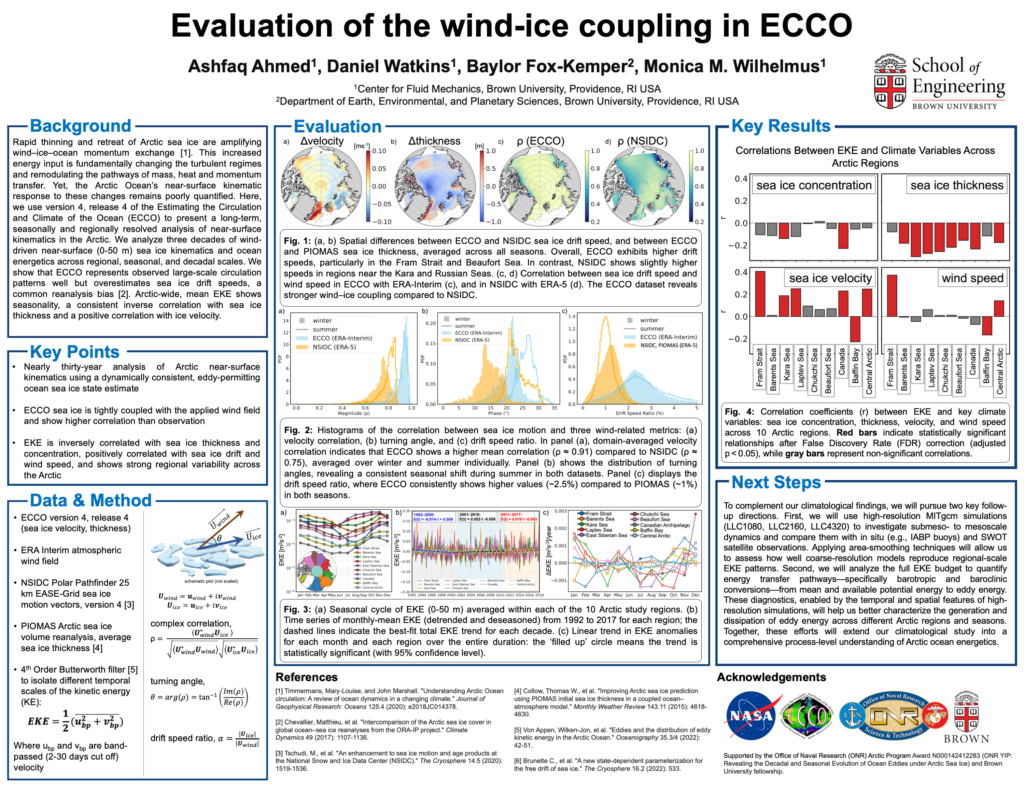
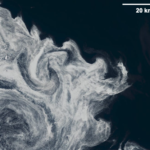
Ocean energetics in an ocean reanalysis
Ashfaq Ahmed, Daniel Watkins, Baylor Fox-Kemper, Monica M. Wilhelmus
The near-surface circulation of the Arctic Ocean (AO) affects freshwater flux, ocean mixing, nutrient transport, and equator-to-pole energy exchange. In the Arctic, climate change impacts the near-surface fluid dynamics across scales, with notable effects like sea ice loss, thinning, and changes to the weather, such as changes to the strength and frequency of cyclones. However, a clear understanding of climate change on ice-covered Arctic circulation remains limited. Eddy kinetic energy (EKE) is a key indicator of AO variability. In this talk, we present the first long-term assessment of seasonal and regional EKE patterns using version 4 of Estimating the Circulation and Climate of the Ocean (ECCOv4r4). ECCOv4r4 is a dynamically consistent ocean state estimate synthesizing a vast number of oceanographic observations using the MITgcm model at coarse but eddy-permitting resolution. Results show strong upper-ocean EKE in the Eurasian Basin and Nordic Seas during winter (Dec-Feb), decreasing with summer melt (Jul-Sep). Freshwater flux reduces summer stratification in the Beaufort and Kara Seas, while winter ice retreat alters it. Preliminary findings indicate increased ocean energetics across the Arctic. Moving forward, we will examine how modeled ice drift speed biases influence the representation of upper-ocean air-ice momentum transfer.
This work was presented in APS Global Physics Summit 2025 conference under the section Session MAR-C66 Granular and Geophysical Flows
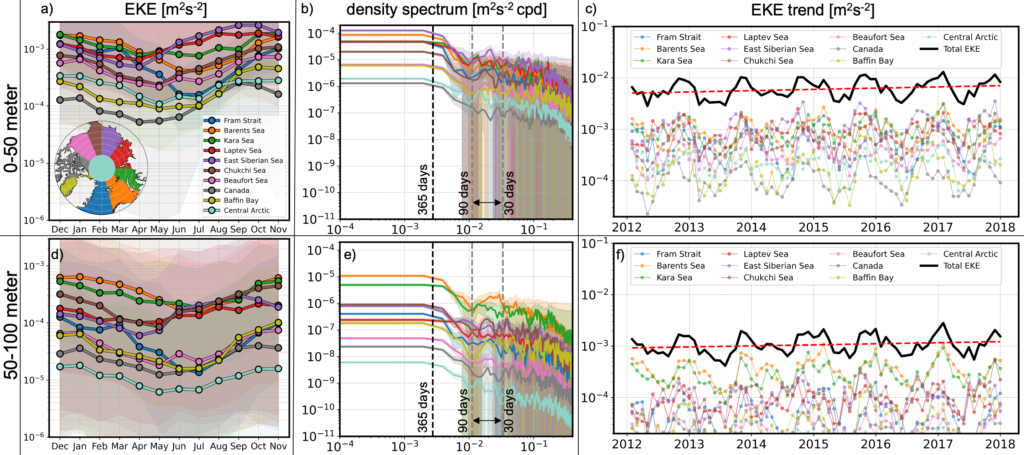
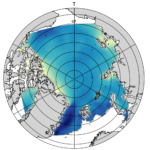
Evaluating wind-ice coupling in ECCO
Ashfaq Ahmed, Daniel Watkins, Baylor Fox-Kemper, Monica M. Wilhelmus
Sea ice modulates the atmosphere-ocean energy exchange. Due to anthropogenic activities, the Arctic is warming, leading to reduction trends in sea ice extent, thickness, and the fraction of multiyear ice. In turn, the average sea ice drift speeds are increasing. Although observations in the Arctic are sparse, numerical ocean models have proven to be a powerful tool for understanding multiple aspects of the Arctic wind-ice-ocean coupled climate system. In this study, we evaluated the seasonal and regional variability of the wind-ice coupling in version 4 of Estimating the Circulation and the Climate of the Ocean (ECCO v4r4). ECCO v4r4 is a dynamically consistent ocean state estimate synthesizing a vast number of oceanographic observations using the MITgcm ocean model. While ECCO v4r4 has been frequently used and assessed for the midlatitude oceans, we present the first assessment of the large-scale Arctic Sea ice circulation in the model. Since wind stress is a key driver of the Arctic Ocean circulation, an accurate representation of wind-ice coupling in the model is critical. We evaluated the ECCO v4r4 sea ice circulation relative to the National Snow and Ice Data Center (NSDIC) Polar Pathfinder 25 km EASE-grid ice motion product and the ERA-Interim wind field between 1992-2017. Overall, broad features of the Arctic Sea ice circulation (e.g., Beaufort Gyre, Transpolar Drift) are well represented in ECCO v4r4. However, we found that ECCO drift speeds are consistently higher than observed values, with summer drift speeds nearly twice as high as in the NSIDC. The strength of the correlation varies by region and is highest in the central Arctic. In the marginal seas, the correlation is highest in winter and lowest in summer. We investigated the underlying physics of this difference by examining the relationship between the monthly ice drift speed and the monthly wind field. Compared to the observations, the correlation between wind speeds and ice drift in ECCO v4r4 is weaker in summer when the ice pack is not in contact with the coasts. This correlation increases during the winter, suggesting the modeled sea ice pack is more responsive relative to the wind than it is in the observations. Going forward, our goal is to understand how a model bias in drift speed is likely to affect the upper ocean circulation and the air-ice momentum transfer.
This work was presented in AGU 2024 conference under the section C33E-06 Evaluating wind-ice coupling in ECCO

Fig: seasonal sea ice mean velocity from ECCOv4r4 ocean estimate (1992-2017).
